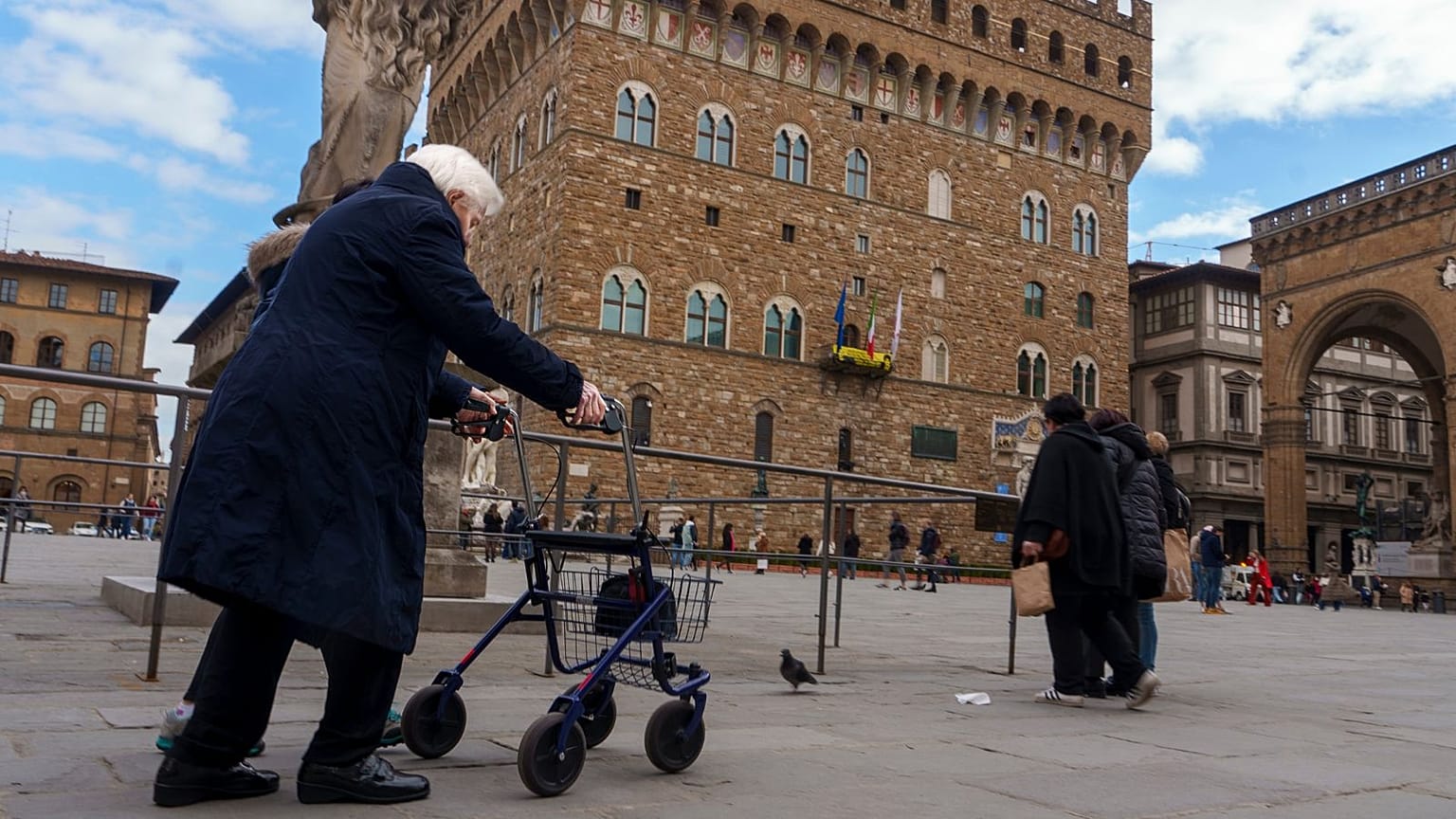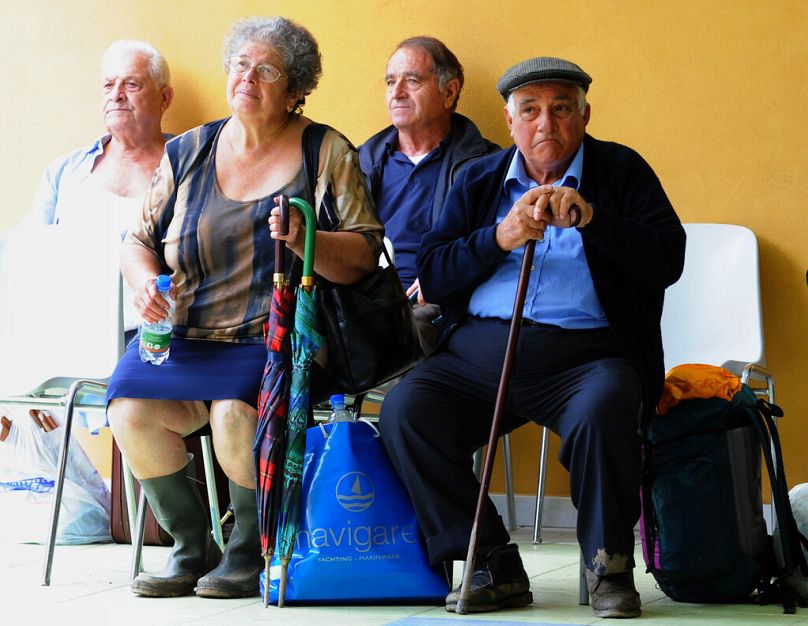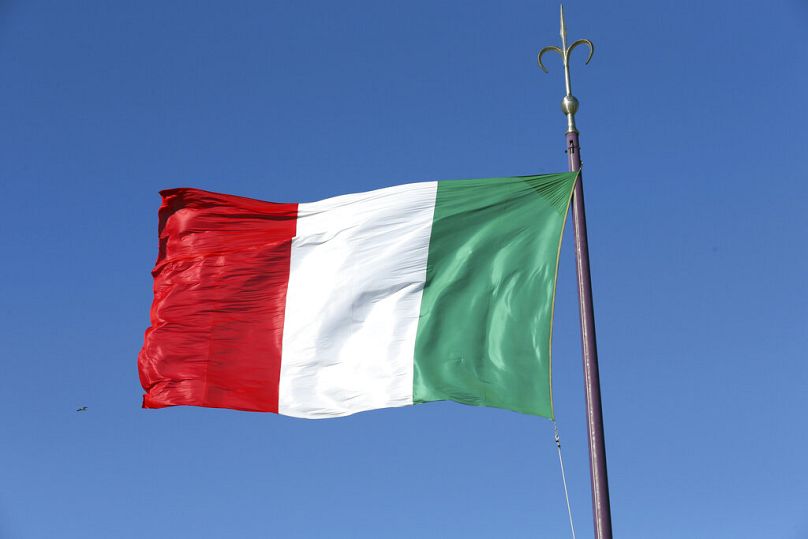Declining birth rates and better survival odds for older people have significantly aged Italy’s population, causing economists to worry about the country’s future.
Italy’s ageing problem is starting to take a toll on its world-famous ‘dolce vita’.
The number of newborns doesn’t nearly match the country’s growing number of pensioners. Meanwhile, efforts by Giorgia Meloni’s right-wing government to boost birth rates have so far failed to turn the tide on Italy's demographic decline.
According to data from Eurostat, Italy is the oldest country in the European Union, with an average median age of above 48. Together with Portugal, Italy has the highest percentage of residents older than 65 at 24%. That's roughly one in four.
This increase reflects a European-wide trend. The EU has experienced an overall rise in its median age to 44.5 years old. Now, the number of elderly people represents more than one-fifth of the bloc's population.
“However, what’s even more significant is the ageing trend within Italy’s older population itself,” Cecilia Tomassini, professor in Demography and Social Statistics at the University of Molise, told Euronews.
“Specifically, the proportion of individuals aged 80 and above has risen to 7.7% of the total population, a notable increase from a mere 3.3% recorded in 1991,” she added.
“Essentially, while the overall population increased by 3.4% since 1991, the segment aged 80 and above more than doubled during the same period.”
But the Italian ‘nonni’ - well-beloved figures in the country as well as abroad - are not the problem, Giovanni Lamura from Italy's National Institute of Health and Science on Ageing told Euronews.
“To have people live longer should be a goal on the political agenda of any country’s government,” he said. “The problem is that fertility rates in Italy are low, we have fewer and fewer children.”
How has Italy gotten so old?
The reason for Italy’s ageing population is simple: the number of deaths, due to its ageing population, far surpasses the number of births.
For the past 40 years, the median number of kids per family in Italy has been below 1.5, Alessandro Rosina, professor of Demography and Social Statistics at the Università Cattolica di Milano, told Euronews. “The most recent data is below 1.24 per woman,” he said.
A rate of 2 births per woman is needed to stabilise a population.
This decline in fertility rates started in the 1980s, according to Tomassini, albeit with occasional fluctuations.
“Migration flows have only marginally slowed down this ageing process,” she said. “Otherwise, its impact would have been considerably more pronounced.”
While there was a period during which this negative balance was offset by a higher rate of positive migration, “this is no longer the case,” said Tomassini. “As a result, the population decline in Italy is becoming more pronounced.”
The fact that elderly people in Italy are living longer is actually positive news, Lamura said.
“People were able to live longer thanks to beneficial policies, generous pensions and a free healthcare system which allowed even those who couldn’t afford it to receive care.”
But there’s a flip side.
Lamura claims the country hasn’t invested as much in younger generations as it did in previous ones.
“Italy should do more to financially help young families, but it has a massive GDP debt [140.6% of its entire GDP as of September 2023] which is under international scrutiny, so it cannot afford to fall further into debt with some generous new pro-family policies,” he said.
“People in Italy plan and dream of having children and a family as much as other Europeans. What’s lacking is adequate policies to support the realisation of these plans and dreams,” Rosina said.
“Italy has one of the highest average ages for parents to have their first child [in Europe], mostly because young people struggle to enter the workforce and find stable jobs, as well as facing difficulties getting their own homes”.
Those who have kids then face the challenge of trying to juggle family life and work life in a country which lacks both economic support and adequate infrastructure for young parents and their children.
“In Italy, the birth of a child is likely to represent a worsening of the parents’ economic conditions, as well as a complication of their life from an organisational perspective, more than in other countries,” Rosina said.
“The country’s limited policies aimed at supporting young families send the negative message that having a family doesn’t bring value to the community and it’s not worthy of support.”
What future of Italy?
For Tomassini, the ageing of the Italian population and the drop in birth rates are expected to continue in the future.
That's “unless significant interventions occur, such as mortality crises or a new baby boom,” she said. “In the short term, migration may play as a significant variable that could influence population dynamics, albeit it can be politically slippery.”
Meloni’s government has made increasing birth rates one of the priorities of her government, but has so far failed to achieve concrete results.
The right-winger has halved the VAT on nappies and baby milk, but childcare remains expensive and hardly affordable for many.
The biggest fear for the country is that its already weak economic growth will continue declining, with Italy eventually unable to afford its pension and welfare system.
“If fertility rates should remain the same, Italy could have just 320,000 newborns in 25 years, with an ever more unbalanced demographic structure,” Rosina said.
“It’s not a dystopian future, but simply the most likely scenario according to the current dynamics. If Italy doesn’t follow the example of the best policies in Europe in this field, the country’s development and social sustainability will be at risk in the next decades.”

















